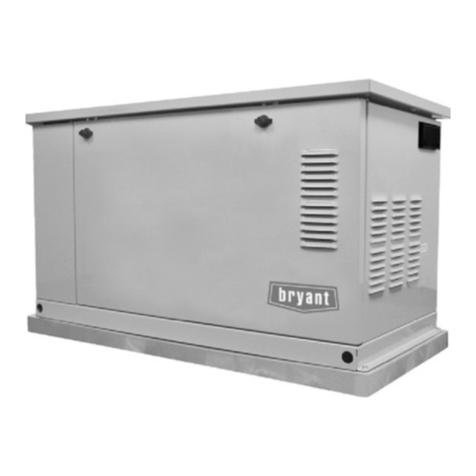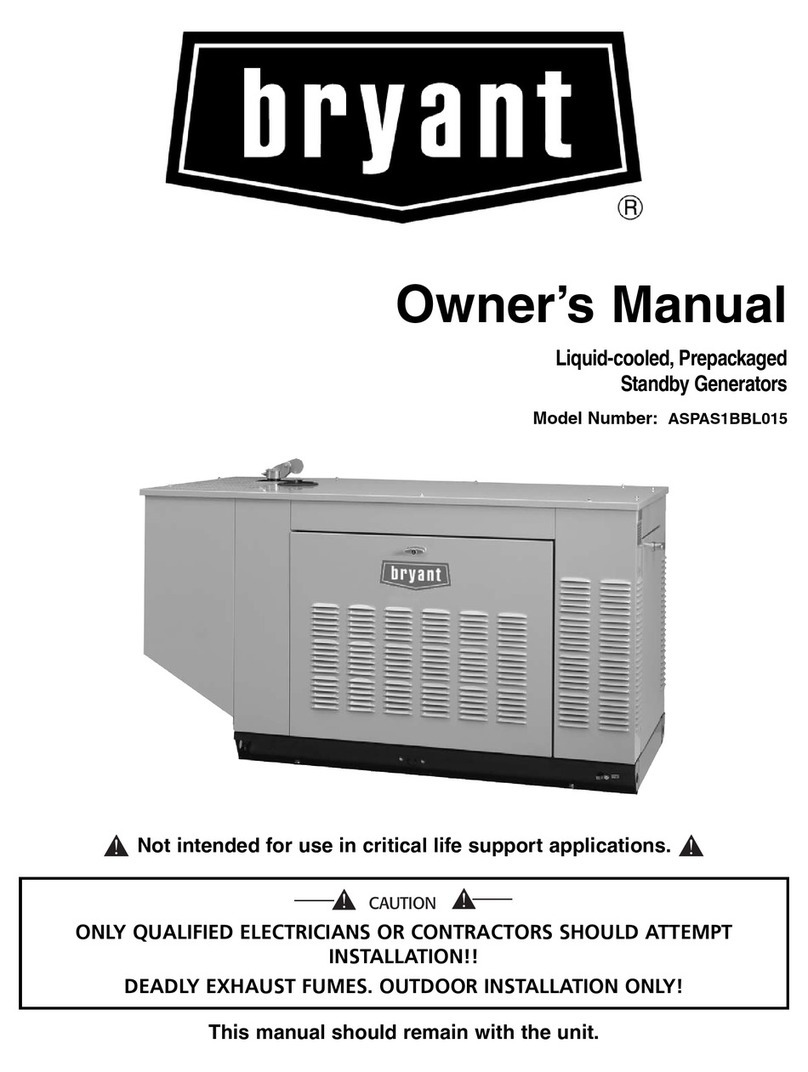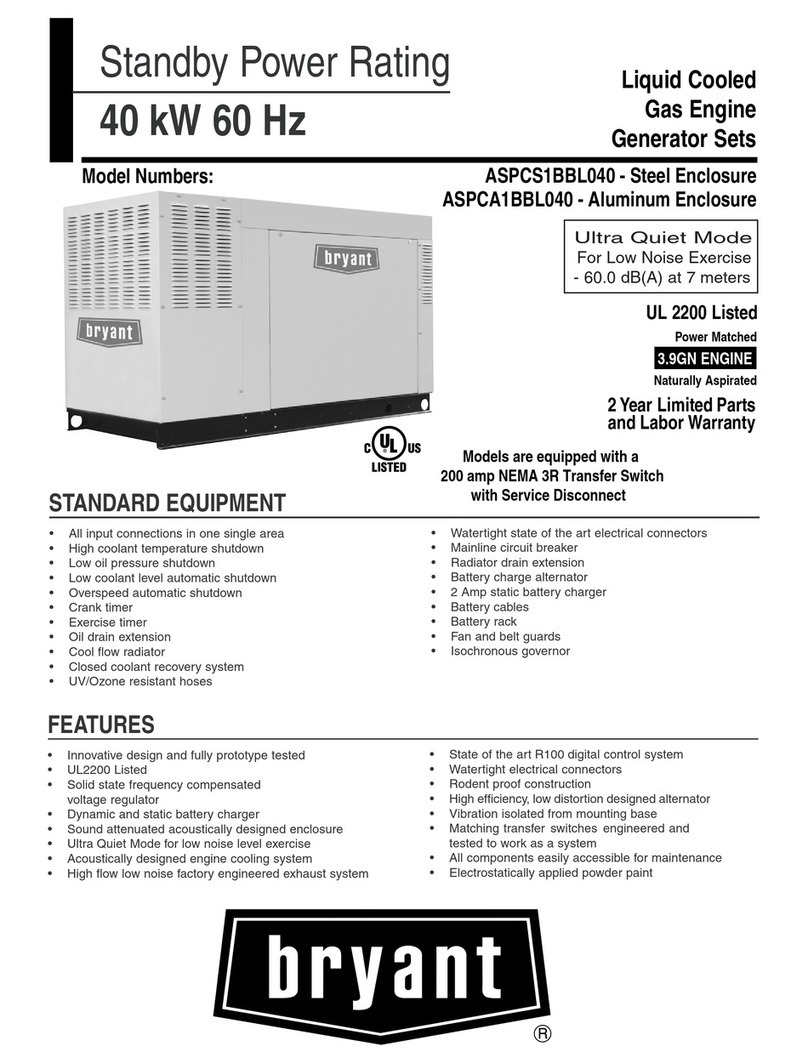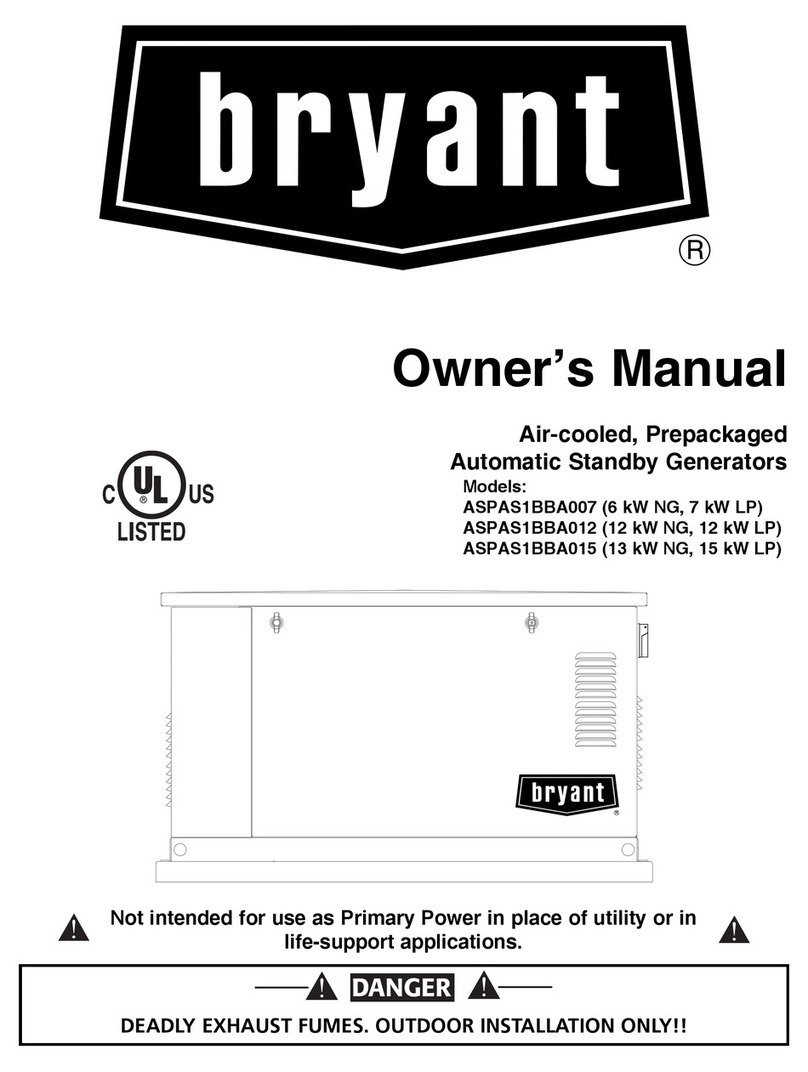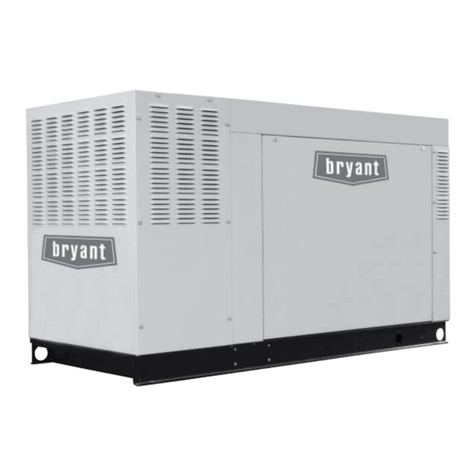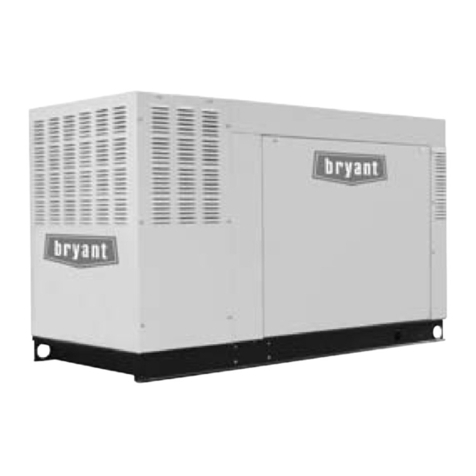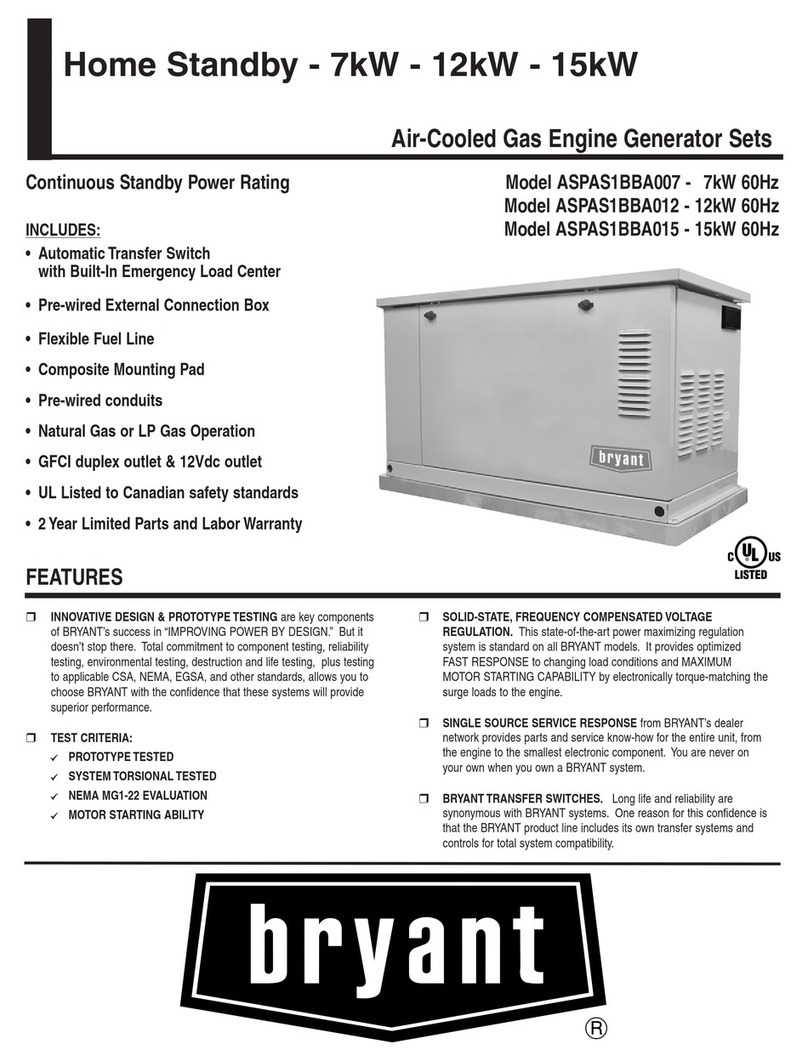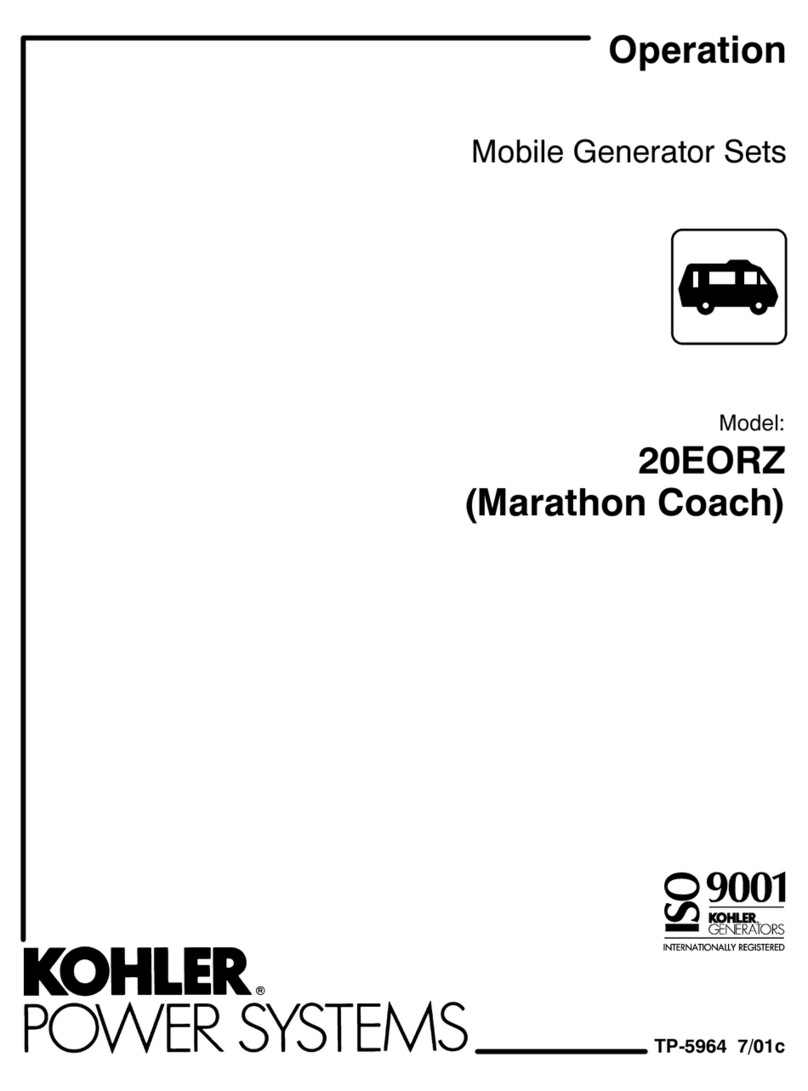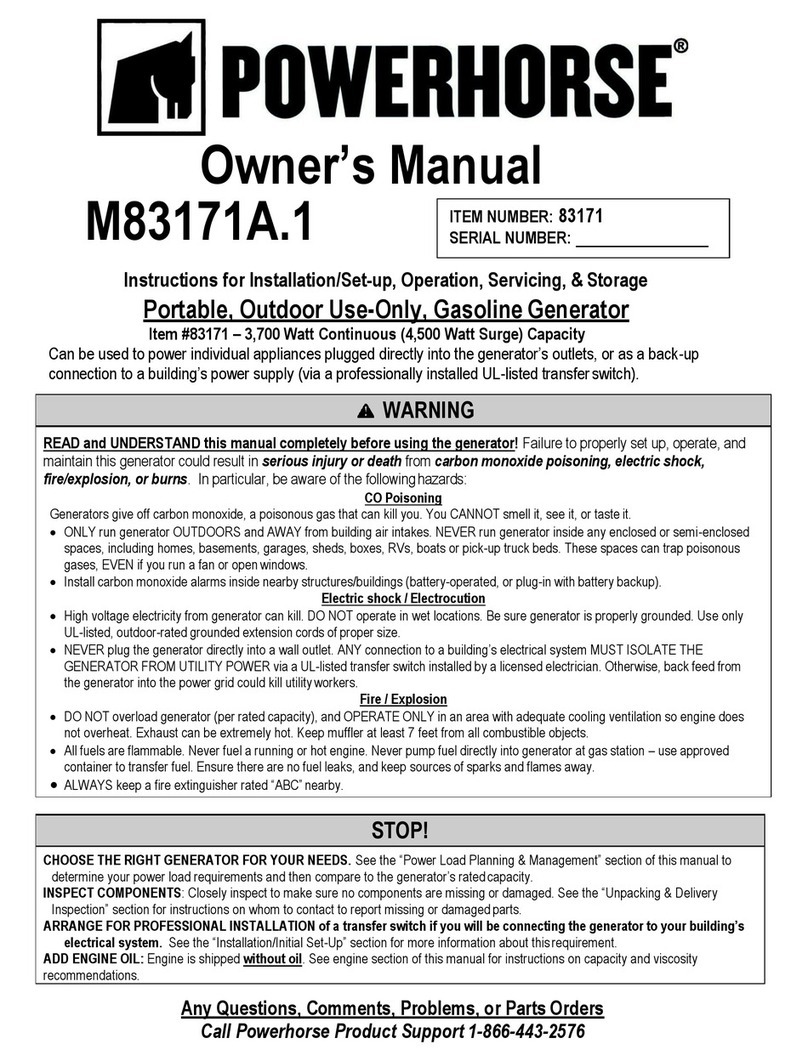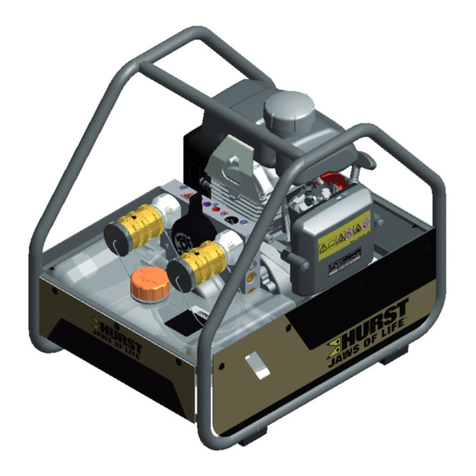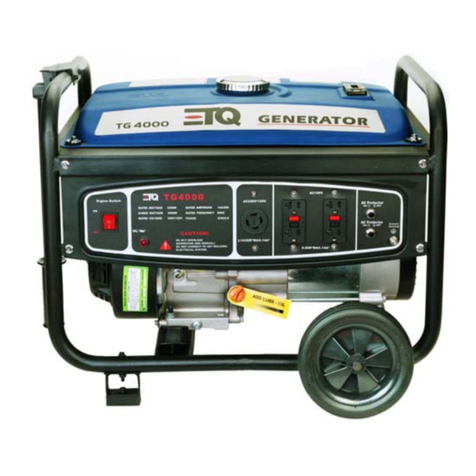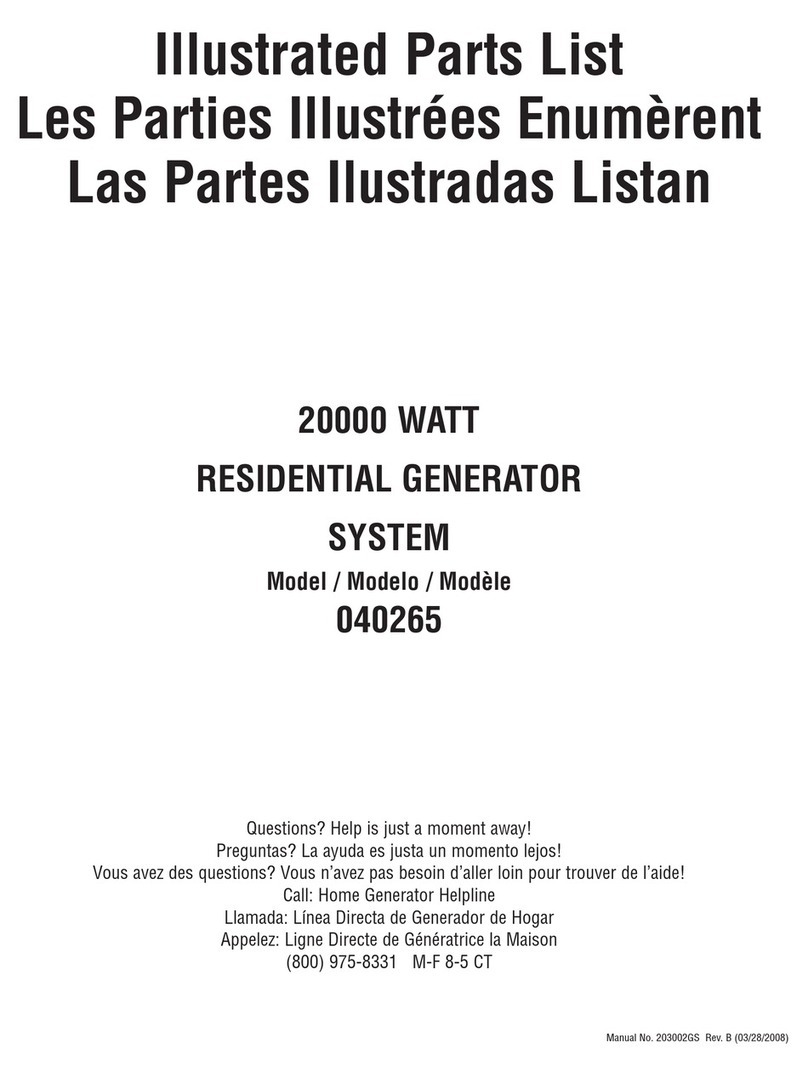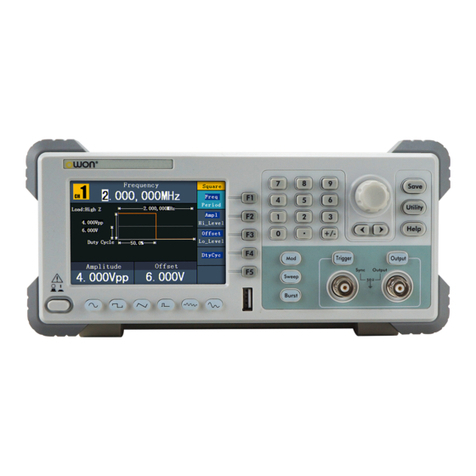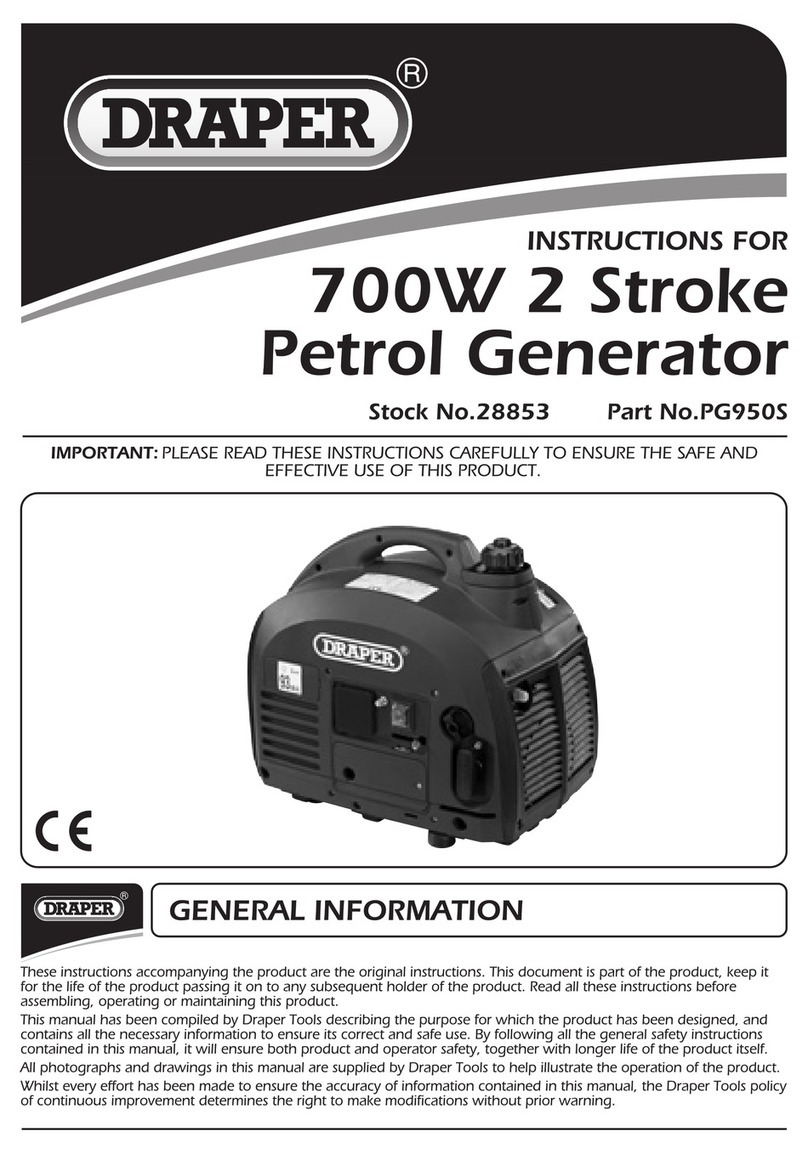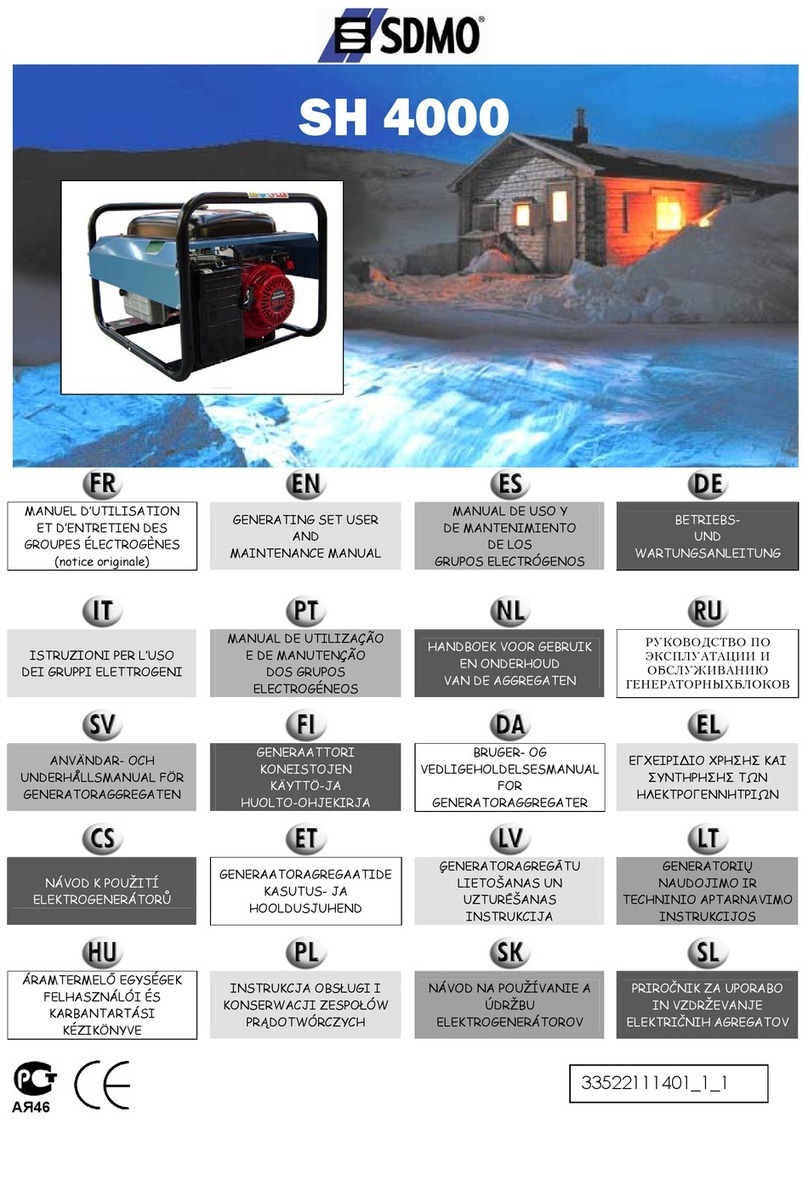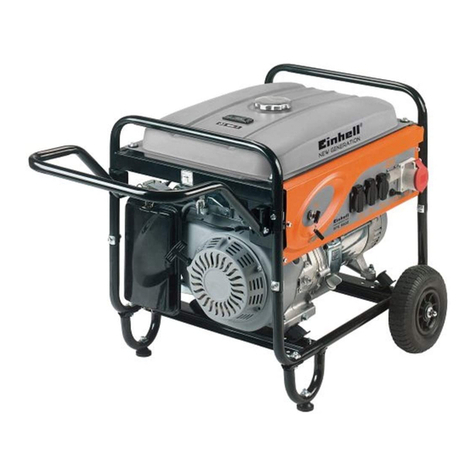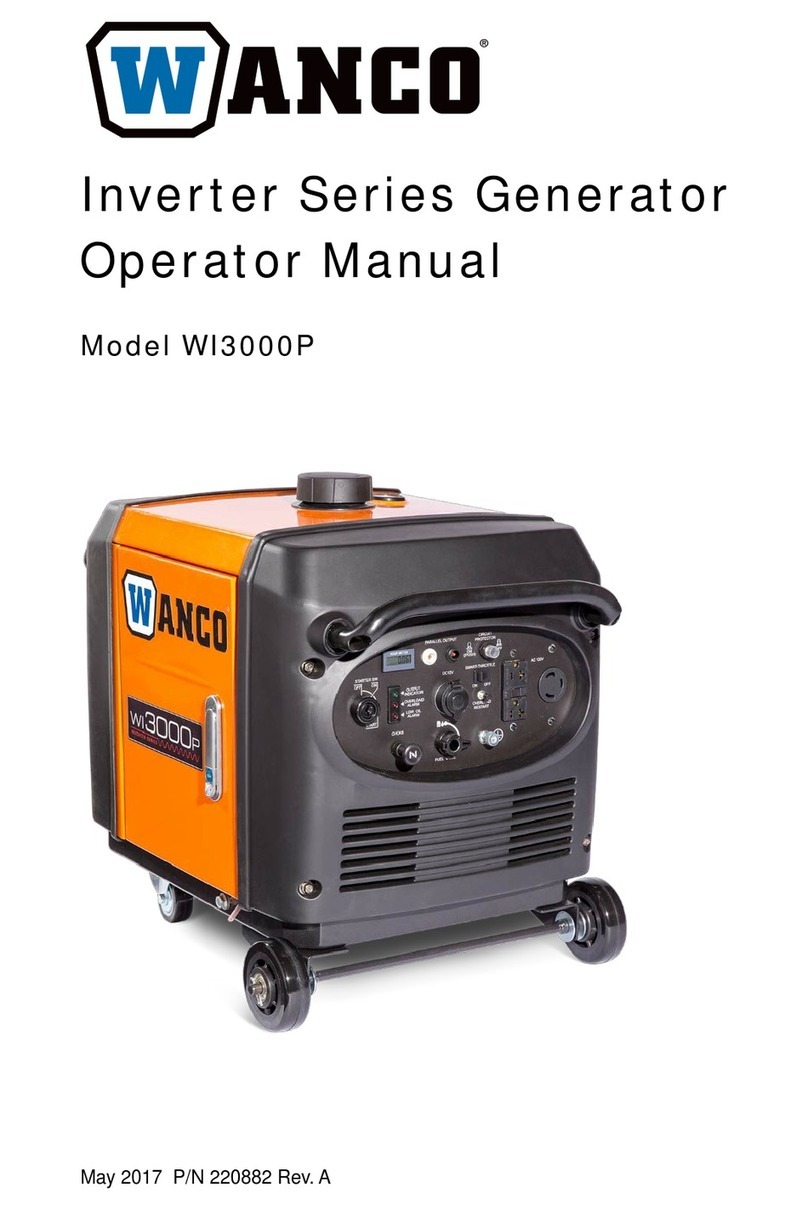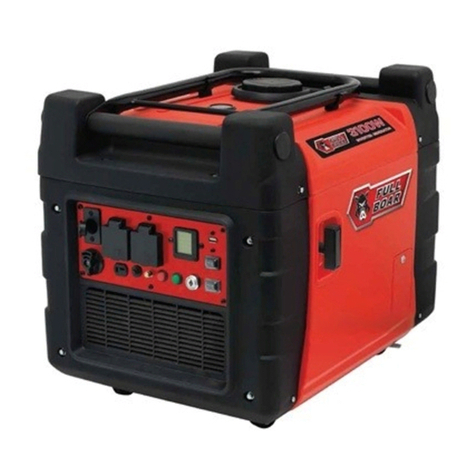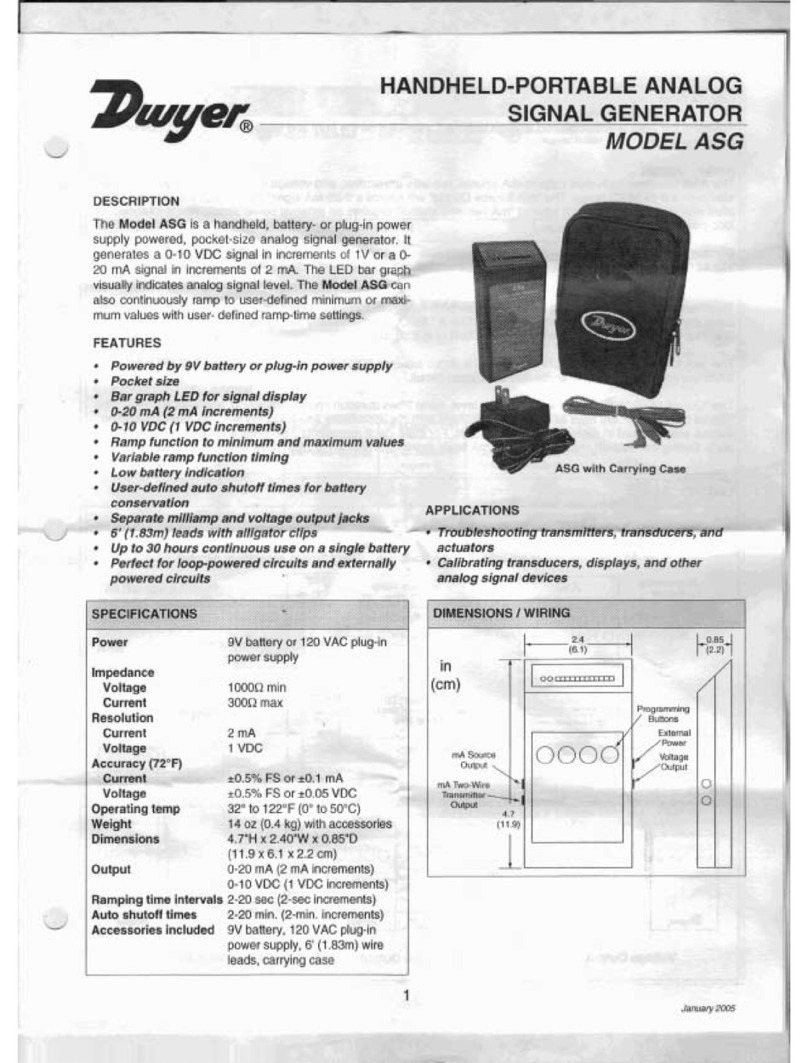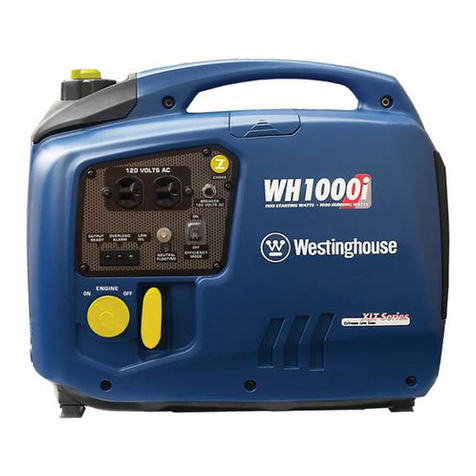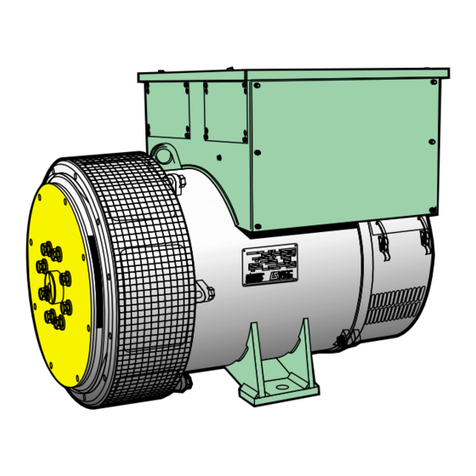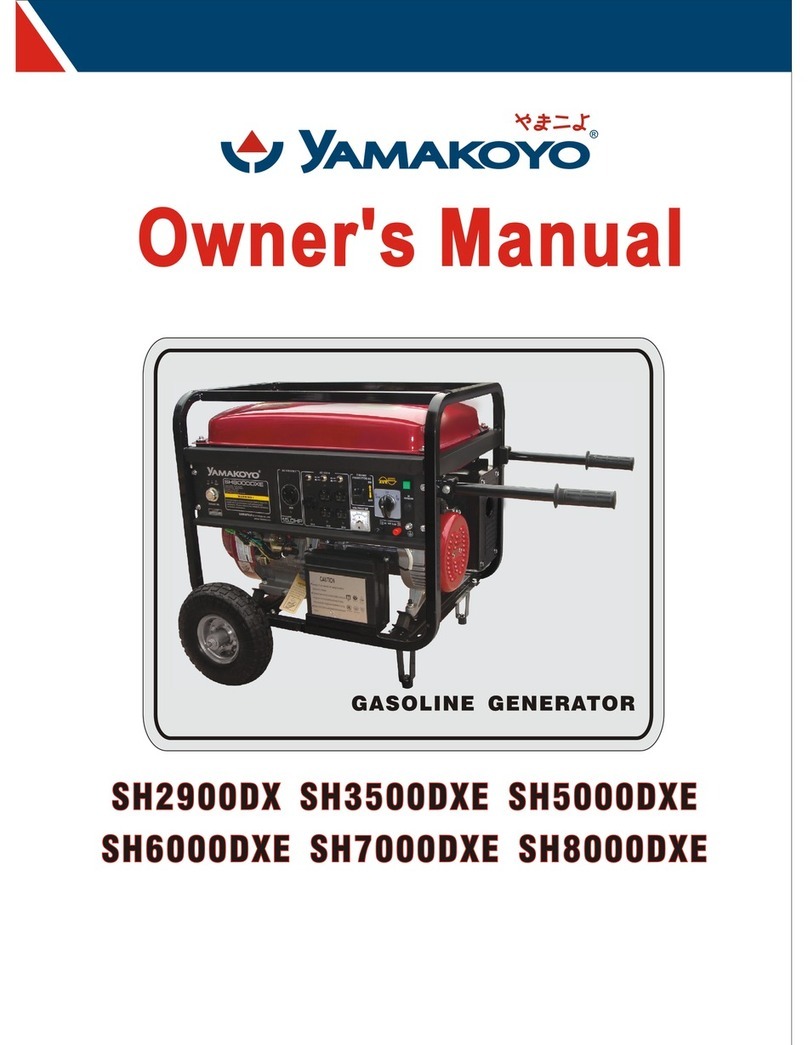Page 9
SECTION 1.2
PREPACKAGED INSTALLATION BASICS
GENERAL INFORMATION
INTRODUCTION
Information in this section is provided so that the
service technician will have a basic knowledge of
installation requirements for prepackaged home
standby systems. Problems that arise are often
related to poor or unauthorized installation practices.
A typical prepackaged home standby electric system
is shown in Figure 1 (next page). Installation of such a
system includes the following:
• Selecting a Location
• Grounding the generator.
• Providing a fuel supply.
• Mounting the load center.
• Connecting power source and load lines.
• Connecting system control wiring.
• Post installation tests and adjustments.
SELECTING A LOCATION
Install the generator set as close as possible to the
electrical load distribution panel(s) that will be
powered by the unit, ensuring that there is proper
ventilation for cooling air and exhaust gases. This will
reduce wiring and conduit lengths. Wiring and conduit
not only add to the cost of the installation, but
excessively long wiring runs can result in a voltage
drop.
GROUNDING THE GENERATOR
The National Electric Code requires that the frame
and external electrically conductive parts of the
generator be property connected to an approved
earth ground. Local electrical codes may also require
proper grounding of the unit. For that purpose, a
grounding lug is attached to the unit. Grounding may
be accomplished by attaching a stranded copper wire
of the proper size to the generator grounding lug and
to an earth-driven copper or brass grounding-rod
(electrode). Consult with a local electrician for
grounding requirements in your area.
THE FUEL SUPPLY
Prepackaged units with air-cooled engine were
operated, tested and adjusted at the factory using
natural gas as a fuel. These air-cooled engine units
can be converted to use LP (propane) gas by making
a few adjustments for best operation and power.
LP (propane) gas is usually supplied as a liquid in
pressure tanks. Both the air-cooled and the liquid
cooled units require a "vapor withdrawal" type of fuel
supply system when LP (propane) gas is used. The
vapor withdrawal system utilizes the gaseous fuel
vapors that form at the top of the supply tank.
The pressure at which LP gas is delivered to the
generator fuel solenoid valve may vary considerably,
depending on ambient temperatures. In cold weather,
supply pressures may drop to "zero". In warm
weather, extremely high gas pressures may be
encountered. A primary regulator is required to
maintain correct gas supply pressures.
Recommended gaseous fuel pressure at the inlet side
of the generator fuel solenoid valve is as follows:
LP NG
Minimum water column 11 inches 5 inches
Maximum water column 14 inches 7 inches
A primary regulator is required to ensure that proper
fuel supply pressures are maintained.
DANGER: LP AND NATURAL GAS ARE BOTH
HIGHLY EXPLOSIVE. GASEOUS FUEL LINES
MUST BE PROPERLY PURGED AND TESTED
FOR LEAKS BEFORE THIS EQUIPMENT IS
PLACED INTO SERVICE AND PERIODICALLY
THEREAFTER. PROCEDURES USED IN
GASEOUS FUEL LEAKAGE TESTS MUST
COMPLY STRICTLY WITH APPLICABLE FUEL
GAS CODES. DO NOT USE FLAME OR ANY
SOURCE OF HEAT TO TEST FOR GAS
LEAKS. NO GAS LEAKAGE IS PERMITTED.
LP GAS IS HEAVIER THAN AIR AND TENDS
TO SETTLE IN LOW AREAS. NATURAL GAS
IS LIGHTER THAN AIR AND TENDS TO
SETTLE IN HIGH PLACES. EVEN THE
SLIGHTEST SPARK CAN IGNITE THESE
FUELS AND CAUSE AN EXPLOSION.
Use of a flexible length of hose between the
generator fuel line connection and rigid fuel lines is
required. This will help prevent line breakage that
might be caused by vibration or if the generator shifts
or settles. The flexible fuel line must be approved for
use with gaseous fuels.
Flexible fuel line should be kept as straight as
possible between connections. The bend radius for
flexible fuel line is nine (9) inches. Exceeding the
bend radius can cause the fittings to crack.
THE TRANSFER SWITCH / LOAD CENTER
A transfer switch is required by electrical code, to
prevent electrical feedback between the utility and
standby power sources, and to transfer electrical
loads from one power supply to another safely.
PREPACKAGED TRANSFER SWITCHES:
Instructions and information on prepackaged transfer
switches may be found in Part 3 of this manual.
PART 1
